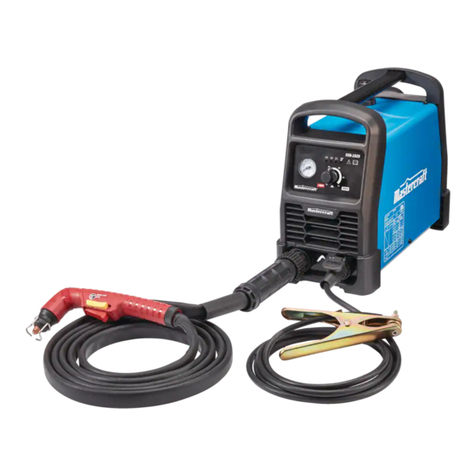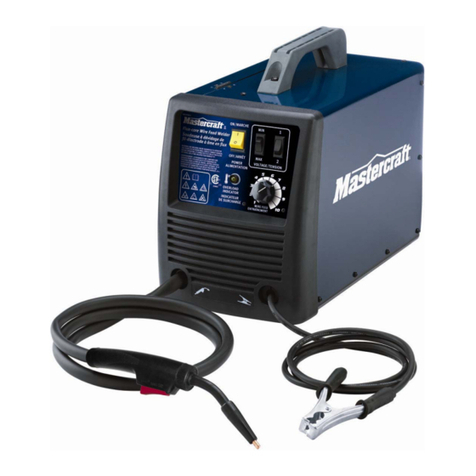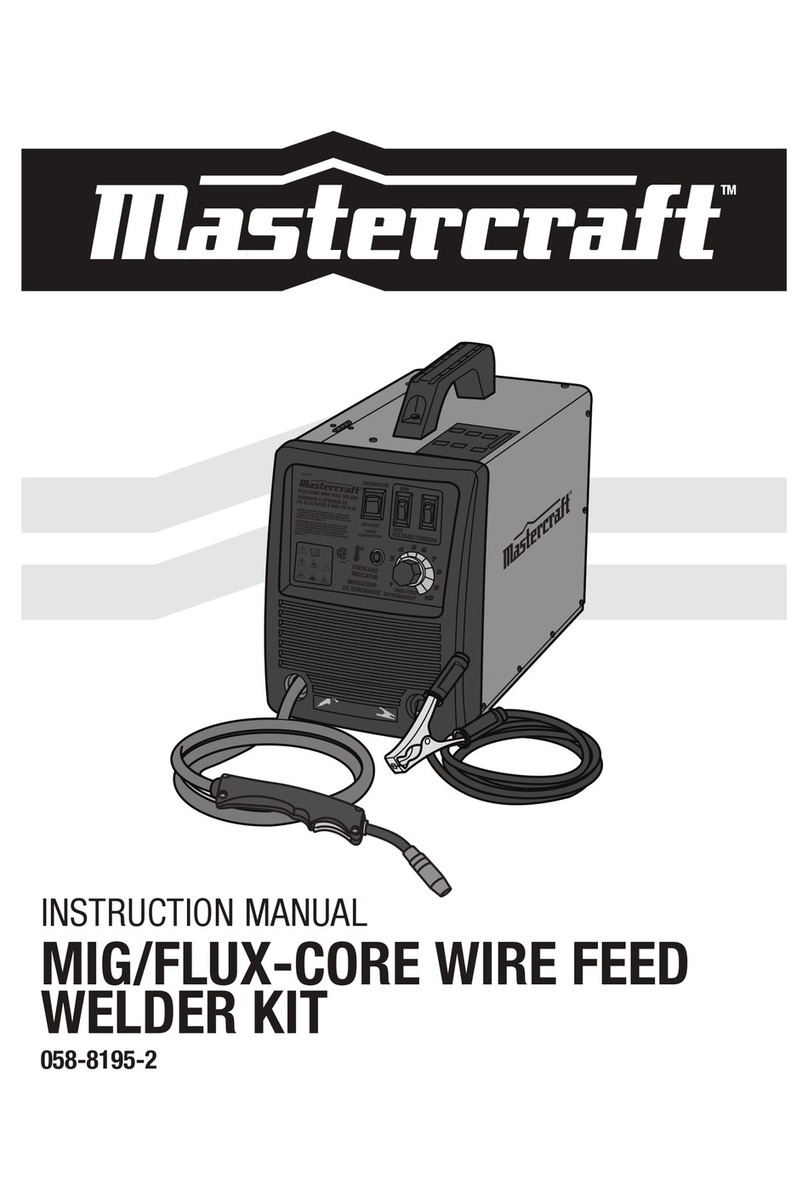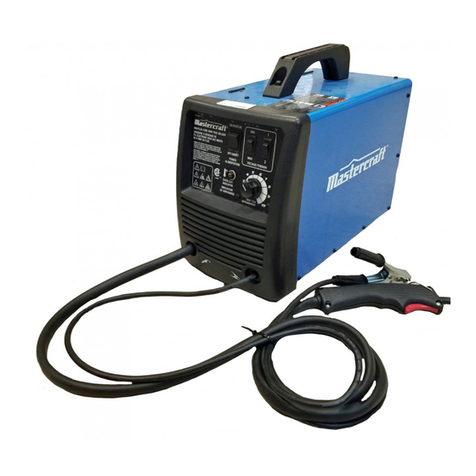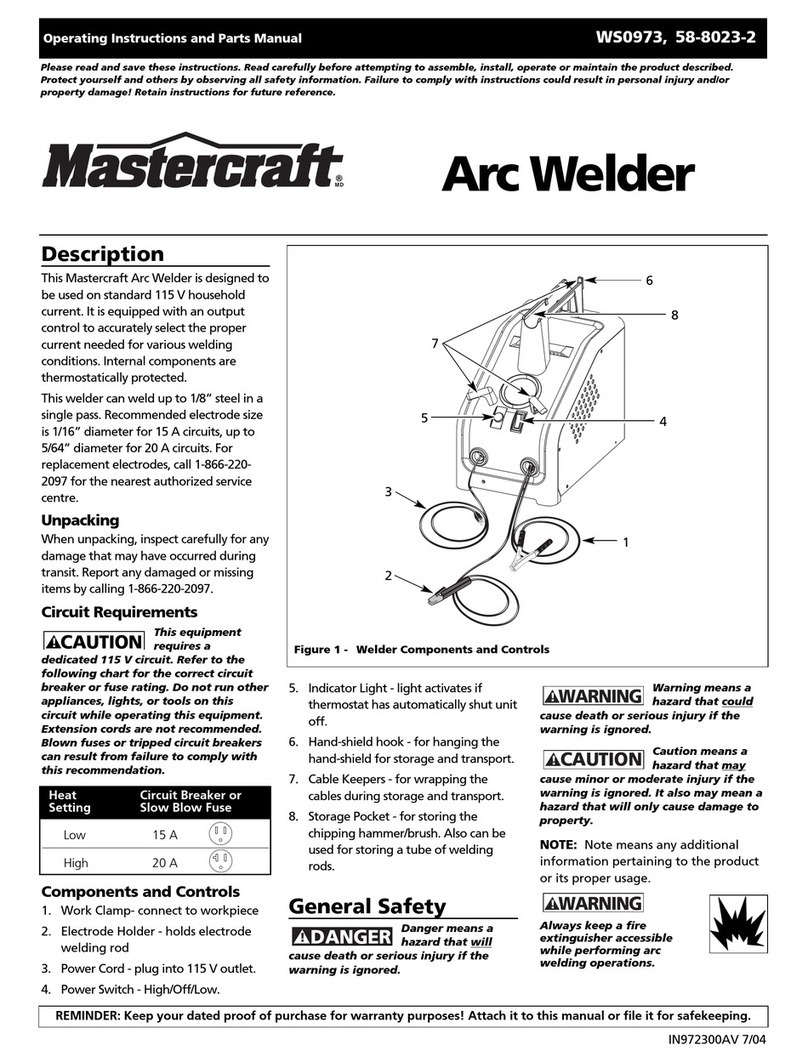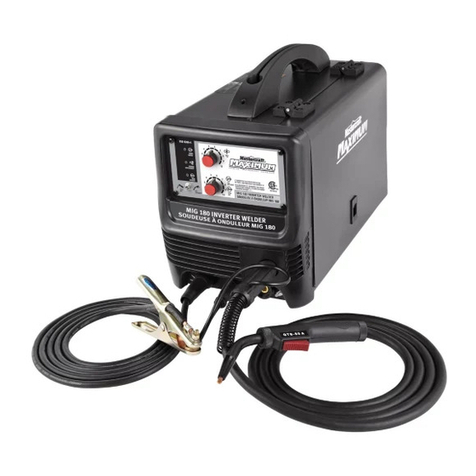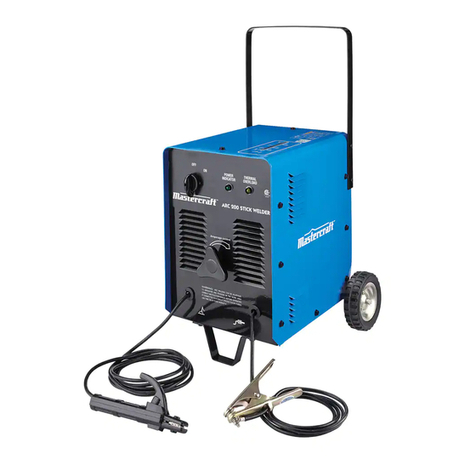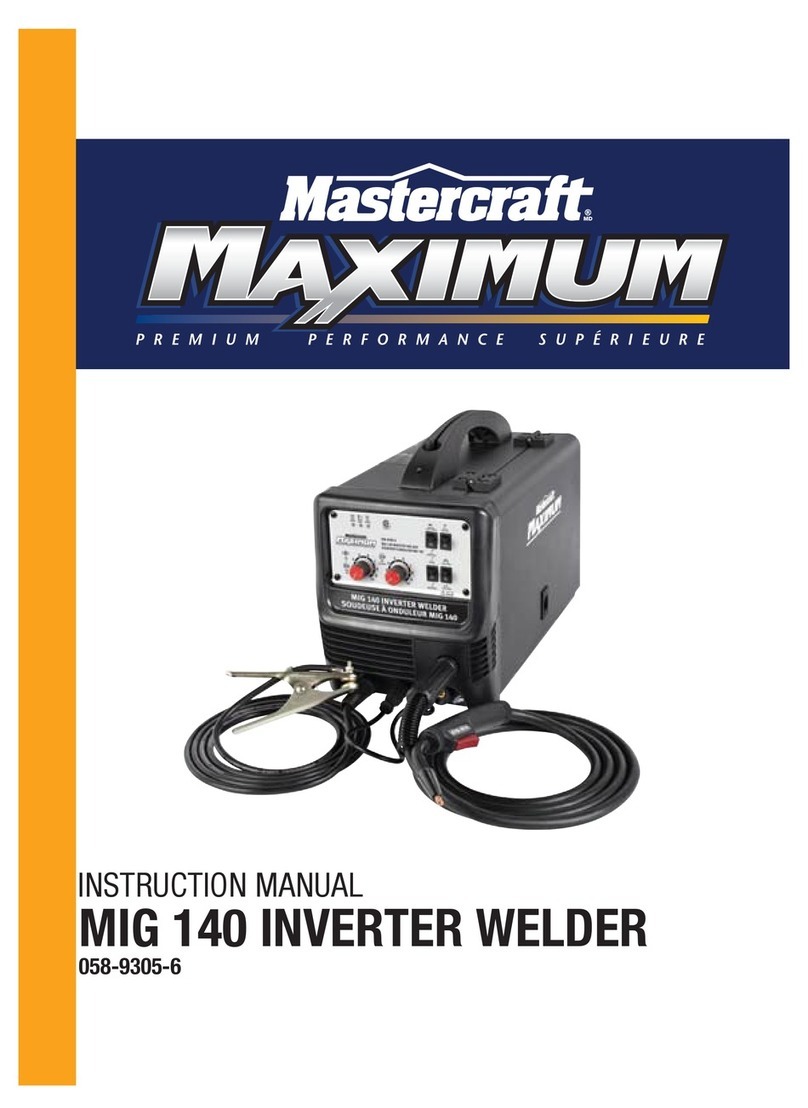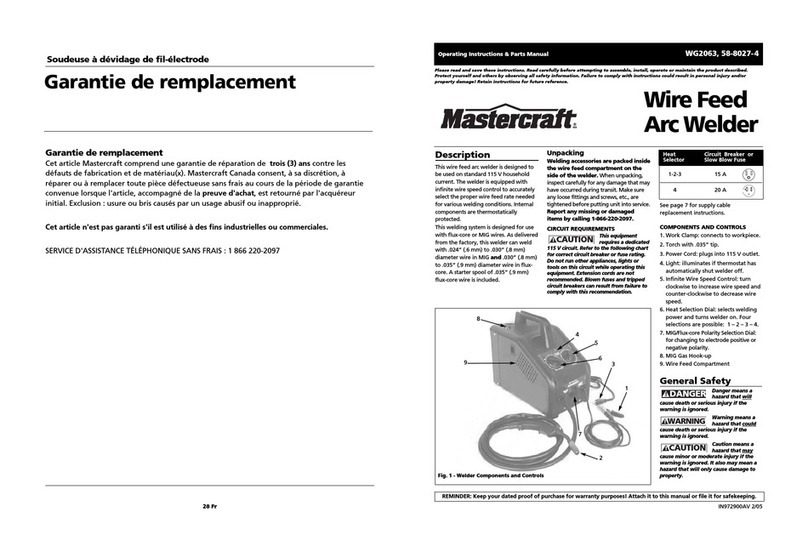16 17
model no. 058-8194-4 | contact us 1-800-689-9928
SNOITCURTSNIGNITAREPO
SNOITCURTSNIGNITAREPO
OERATING INSTRUCTIONS
WARNING!
High voltage danger from power source! Consult a qualified electrician for
proper installation of receptacle at the power source. This welder must be
grounded while in use to protect the operator from electric shock. If you
are not sure if your outlet is properly grounded, have it checked by a qualified
electrician. Do not cut off the grounding prong or alter the plug in any way
and do not use any adaptors between the welder’s power cord and the power
source receptacle. Make sure the POWER switch is OFF then connect your
welder’s power cord to a properly grounded 115 V AC (110 V-120 V), 60 Hz,
single phase, 20 A power source.
There are two angles of the torch nozzle in relation to the work piece that must be
considered when welding.
3.1. Angle A can be varied, but in most cases the optimum angle will be 60 degrees,
the point at which the torch handle is parallel to the work piece. If angle A is increased,
penetration will increase. If angle A is decreased, penetration will decrease also.
The best way to hold the welding torch is the way that feels most comfortable to you.
While practicing to use your new welder, experiment holding the torch in different
positions until you find the one that seems to work best for you.
Power switch-The power switch supplies electrical current tothe welder. Whenever
the power switch is in the ON position, the welding circuit is activated. ALWAYS turn
the power switch to the OFF position and unplug the welder before performing any
maintenance.
Voltage selector-The voltage selector controls the welding heat. This unit has two
step voltage control. Refer to the label inside the welder side door for recommended
voltage selector settings for your welding job.
Wire speed control-The wire speed control adjusts the speed at which the wire is
fed out of the welding torch. The wire speed needs to be closely matched (tuned-in)
to the rate at which it is being melted off. Some things that affect wire speed selection
are the type and diameter of the wire being used, the heat setting selected, and the
welding position to be used.
Note: The wire will feed faster without an arc. When an arc is being drawn, the wire
speed will slow down.
1. Main control component
2. Hold the torch
3. Position the torch to the work piece
3.2. Angle B can be varied for two reasons: to improve the ability to see the arc in relation to the weld
puddle and to direct the force of the arc.
WARNING!
EXPOSURE TO A WELDING ARC IS EXTREMELY HARMFUL TO THE EYES AND SKIN!
Prolonged exposure to the welding arc can cause blindness and burns. Never
strike an arc or begin welding until you are adequately protected. Wear flameproof
welding gloves, a heavy long-sleeved shirt, cuffless trousers, high-topped shoes, and
an ANSI-approved welding helmet.
model no. 058-1294-8 | contact us 1-800-689-9928model no. 058-1294-8 | contact us 1-800-689-9928model no. 058-1294-8 | contact us 1-800-689-9928
model no. 058-8194-4 | contact us 1-800-689-9928
4. Distance from the work piece
5. Tuning in the wire speed
If the nozzle is held off the work piece, the distance between the nozzle and the work piece should be
kept constant and should not exceed 1/4" (6 mm) or the arc may begin sputtering, signaling a loss in
welding performance.
This is one of the most important parts of MIG welder operation and must be done before starting each
welding job or whenever any of the following variables are changed: heat setting, wire diameter, or wire
type.
5.1. Connect the ground clamp to a scrap piece of the same type of material which you will be
welding. It should be equal to or greater than the thickness of the actual work piece, and free of
oil, paint, rust, etc.
5.2. Select a heat setting.
5.3. Hold the torch in one hand, allowing the nozzle to rest on the edge of the workpiece farthest away
from you, and at an angle similar to that which will be used when welding.
